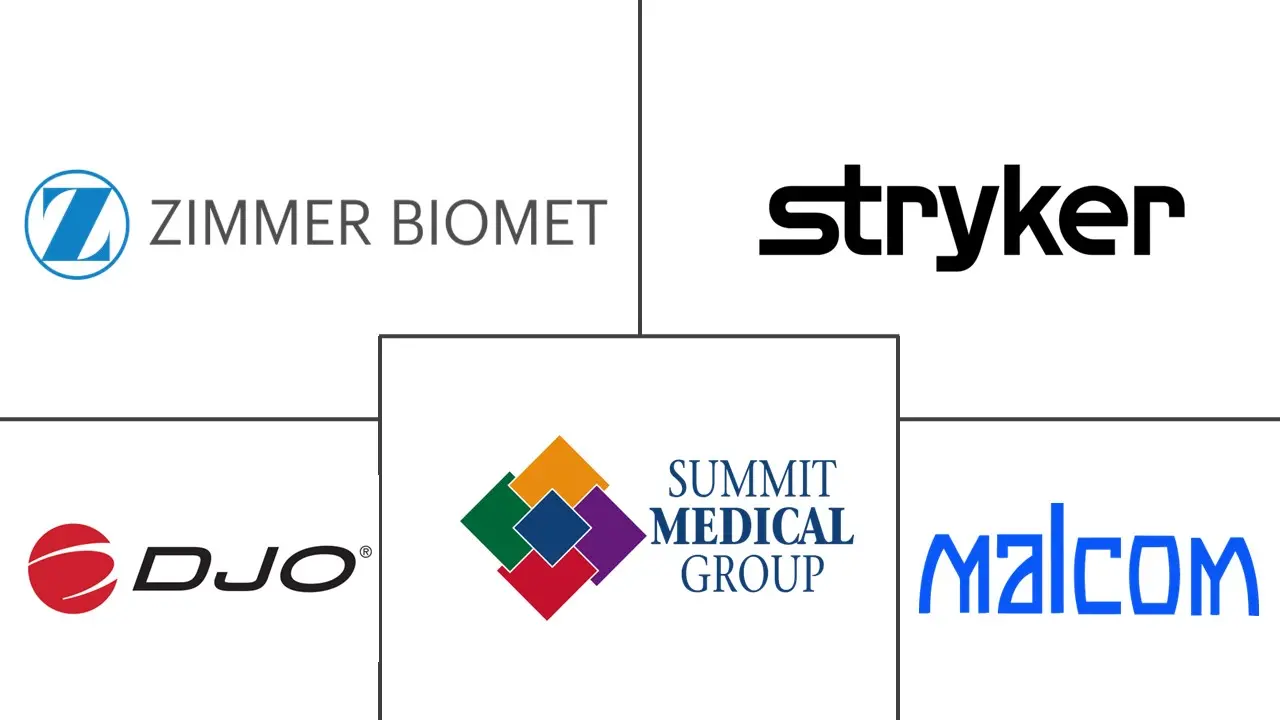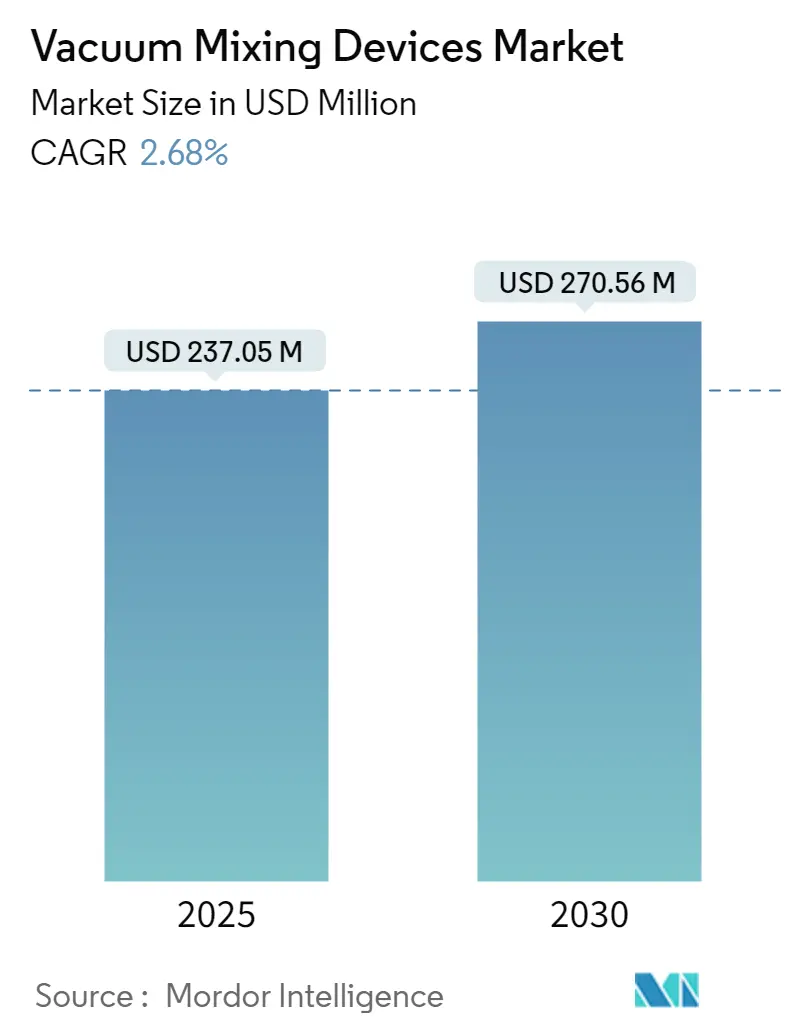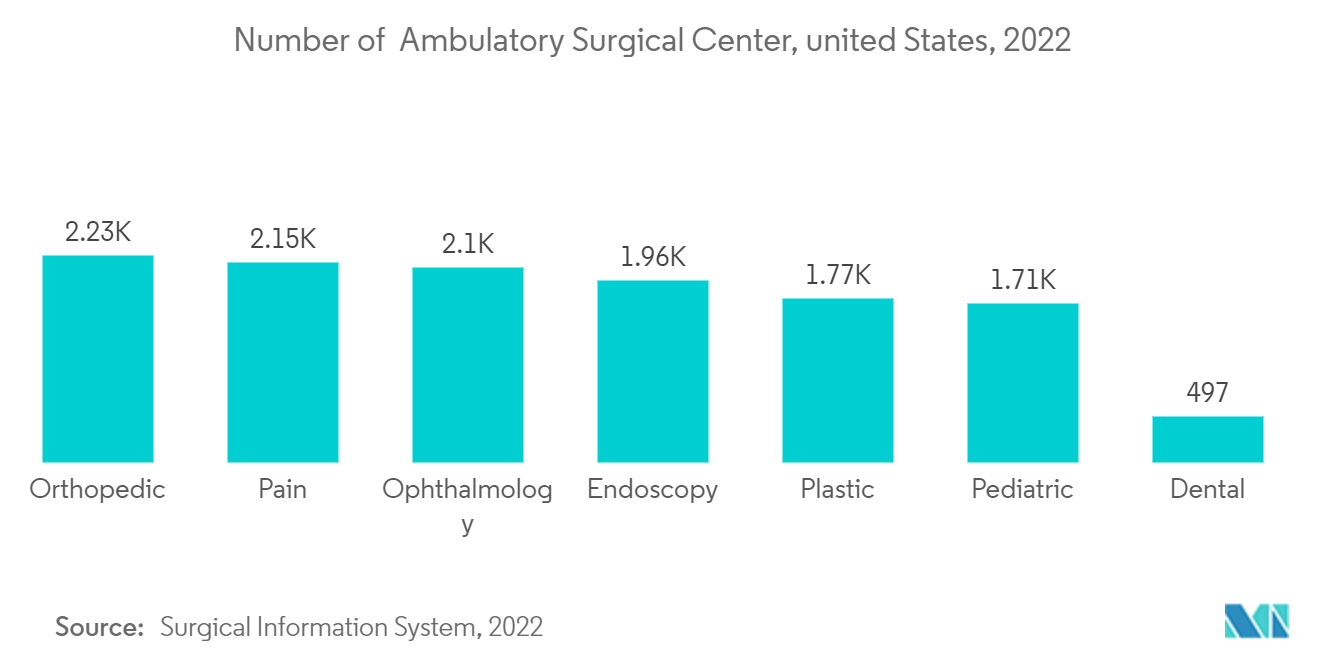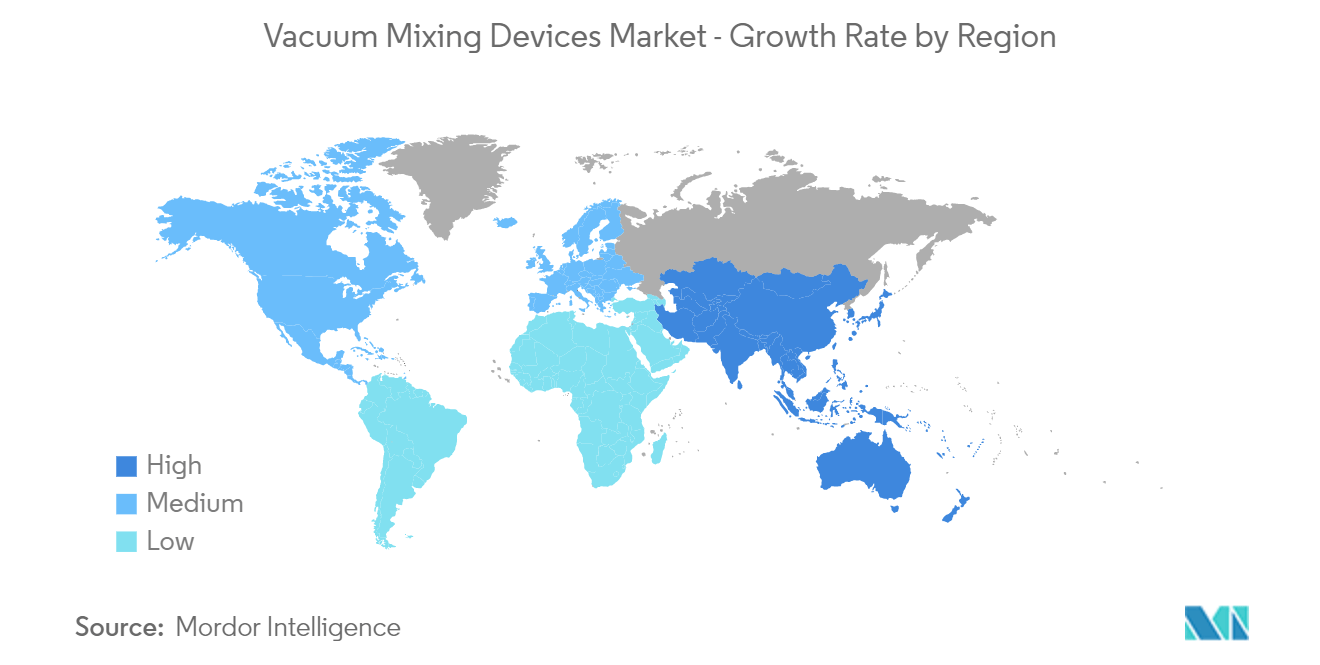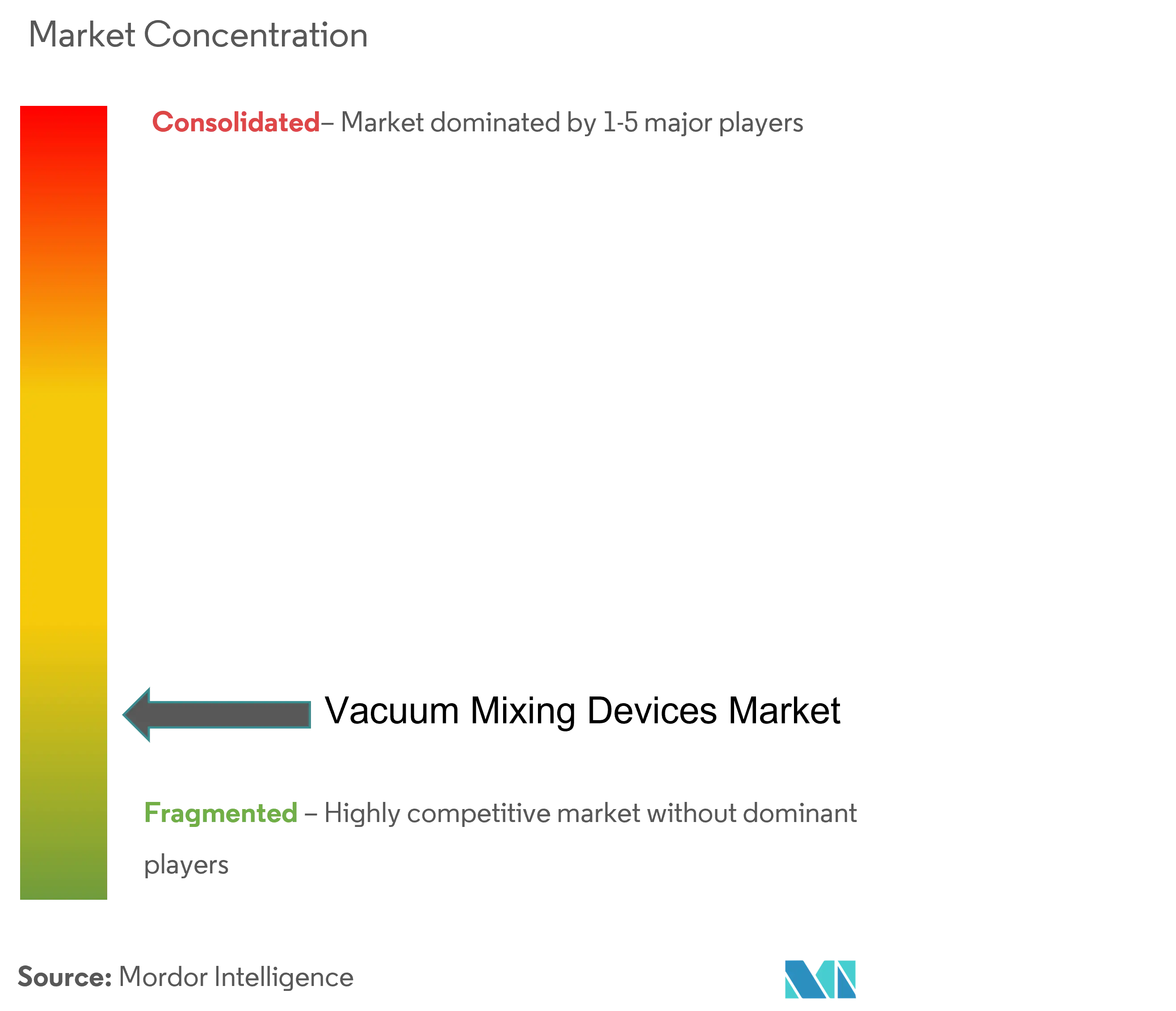Vacuum Mixing Devices Market Analysis
The Vacuum Mixing Devices Market size is estimated at USD 237.05 million in 2025, and is expected to reach USD 270.56 million by 2030, at a CAGR of 2.68% during the forecast period (2025-2030).
The COVID-19 pandemic impacted the vacuum mixing device market due to a decline in orthopedic procedures. For instance, according to a research study published in the Springer Journal in April 2021, nearly 90% of public and private institutions discontinued doing elective, non-urgent orthopedic surgeries, while 68% of private hospitals provided urgent surgical care. In more than 70% of European institutions, the surgical team was reduced. Additionally, during the COVID outbreak in India, 64% of orthopedic physicians ceased doing elective procedures. According to a research article published in the National Library of Medicine, in February 2021 in the United Kingdom, nearly 100,000 patients' joint replacement surgeries were canceled during the initial spread of the novel coronavirus. This severely impacted the market in the initial phase of the pandemic. However, post-pandemic, the market is expected to gain traction over the coming years because of declining COVID-19 cases and the resumption of small bone and orthopedic surgeries.
The factors driving the growth of the markets are the increasing demand for orthopedic and trauma surgeries, the rise in the prevalence of joint problems, and the clinical benefits associated with the use of vacuum-mixing devices. For instance, according to arthritis statistics for 2022 published by the SingleCare team in January 2022, in 2021, more than 350 million people worldwide had arthritis. Also, the study published in the Journal of Clinical Medicine in September 2021 stated that the incidence of osteoarthritis was lowest in patients under 60 years and peaked at 60–70 years. With the significant incidences of osteoarthritis, the demand for joint replacement is expected to increase, further boosting the market growth.
Vacuum mixing devices are used in bone cement to fill the gaps between the bones and prosthetics. Vacuum-mixing devices help improve the mechanical properties of bone cement. A vacuum mixing system reduces monomer evaporation and exposure in the operating room. Monomer exposure from mixing cement releases toxic and organic solvents that are critical when they come into contact. These advantages of vacuum mixing devices in several industries result in propelling the overall market.
However, the stringent government regulation for the approval process of vacuum mixing devices is one of the factors that is hindering the market’s growth.
Vacuum Mixing Devices Market Trends
Ambulatory Surgical Center Segment is Estimated to Witness a Healthy Growth
Ambulatory surgery centers (ASCs), also known as outpatient surgery, day surgery, or same-day surgery, are modern healthcare facilities focused on providing same-day surgical care, including diagnostic and preventive procedures that do not require an overnight stay in the facility. Ambulatory surgery centers are increasing in demand due to the growing number of joint disorders, the increasing burden of the geriatric population, and the rising preference for ambulatory services to avoid unnecessary hospitalization charges, which are the major factors driving the market growth.
According to the Ambulatory Surgical Centers Association of the United States, California recorded the highest number of Medicare-certified ambulatory surgical centers of any other state in the United States. In the year 2021, the state recorded 817 Medicare-certified ambulatory surgical centers.
Also, the governments are focusing on the establishment of more ambulatory surgery centers to reduce the burden on hospitals by providing funds or other policies. For instance, as per the June 2021 circular of the Centers for Medicare and Medicaid Services of the United States, it has increased the number of procedures that can be performed at ambulatory surgery centers and get Medicare reimbursement and starting from January 2022, more than 250 musculoskeletal surgeries will be eliminated from the "inpatient-only list," with an additional 1,500 surgeries eliminated in the following year.
Therefore, due to the increasing number of ambulatory surgery centers around the region and the increasing demand for outpatient surgeries, this is expected to have a positive impact on the studied market and lead the market toward growth.
North America is Expected to Hold a Significant Market Share Over the Forecast Period
North America is expected to hold a significant market share due to the increasing aging population, increasing joint-related disorders, increasing healthcare expenditure, and the presence of a well-established healthcare infrastructure. The rising aging population in North America is more susceptible to fractures and injuries and requires joint replacement surgery more often. Bone cement is used for surgery, and this technique is a better alternative to screws and wires. This propels the vacuum mixing devices market in this region, as these devices are widely used for orthopedic treatment.
According to Population Reference Bureau estimates for 2021, it is predicted that there are likely to be 95 million Americans aged 65 and over by 2060, contributing 23% of the total population. In addition, according to Statistics Canada's 2021 census, there were an estimated 7,021,430 people aged 65 years or older in Canada in 2021, with 3,224,680 males and 3,796,750 females. The surge in the geriatric population is more prevalent in bone and joint orthopedic diseases, which drives the demand for vacuum mixing devices.
Additionally, according to the Centers for Disease Control and Prevention (CDC) updated in October 2021, about 1 in 4 United States adults (23.7%), or about 58.5 million people, have doctor-diagnosed arthritis. As a result, a significant burden of joint diseases is expected to drive growth in the vacuum mixing devices market during the forecast period.
Thus, all the aforementioned factors are expected to boost segment growth over the forecast period.
Vacuum Mixing Devices Industry Overview
The vacuum mixing devices market is fragmented with the presence of several players. The market players are focusing on expanding their vacuum mixing devices product line, primarily by improving their existing product portfolios, along with continuous innovations in the technology. Therefore, these players are adopting growth strategies to expand their product offerings, strengthen their geographical reach, and expand their customer base. Some of the companies currently dominating the market are Zimmer Biomet, Stryker Corporation, DJO Global Inc., Summit Medical Group, Malcom Co. Ltd, Reitel Feinwerktechnik GmbH, and J. MORITA CORP.
Vacuum Mixing Devices Market Leaders
-
Zimmer Biomet
-
Stryker Corporation
-
DJO Global, Inc.
-
Summit Medical Group
-
Malcom Co.,Ltd
- *Disclaimer: Major Players sorted in no particular order
Vacuum Mixing Devices Market News
- January 2023: Zimmer Biomet Holdings, Inc. announced that it has reached a definitive agreement to acquire Embody, Inc., a privately-held medical device company for $155 million at closing and up to an additional $120 million subject to achieving future regulatory and commercial milestones over a three year period.
- February 2022: Stryker announced that it has completed the previously announced acquisition of Vocera Communications, Inc.
Vacuum Mixing Devices Industry Segmentation
As per the scope, vacuum mixing devices are used in bone cement for filling the gaps between the bones and prosthetics. Moreover, it is also used to give support to artificial joints of the shoulder, knee, and elbow, and as compared to conventional mixing techniques, these devices mix the bone cement before infusion procedures. The Market is Segmented by Type (Vertical Vacuum-mixing Devices and Rotational Vacuum-mixing Devices), Modality (Bench Top Devices and Portable Devices), End-User (Hospitals, Ambulatory Surgical Centers, Other End Users), and Geography (North America, Europe, Asia-Pacific, Middle East and Africa, and South America). The report offers the value (in USD million) for the above segments. The market report also covers the estimated market sizes and trends for 17 different countries across major regions, globally.
| By Type | Vertical Vacuum-mixing Devices | ||
| Rotational Vacuum-mixing Devices | |||
| By Modality | Bench Top Devices | ||
| Portable Devices | |||
| By End User | Hospitals | ||
| Ambulatory Surgical Centers | |||
| Other End Users | |||
| Geography | North America | United States | |
| Canada | |||
| Mexico | |||
| Europe | Germany | ||
| United Kingdom | |||
| France | |||
| Italy | |||
| Spain | |||
| Rest of Europe | |||
| Asia-Pacific | China | ||
| Japan | |||
| India | |||
| Australia | |||
| South Korea | |||
| Rest of Asia-Pacific | |||
| Middle East and Africa | GCC | ||
| South Africa | |||
| Rest of Middle East and Africa | |||
| South America | Brazil | ||
| Argentina | |||
| Rest of South America | |||
Vacuum Mixing Devices Market Research Faqs
How big is the Vacuum Mixing Devices Market?
The Vacuum Mixing Devices Market size is expected to reach USD 237.05 million in 2025 and grow at a CAGR of 2.68% to reach USD 270.56 million by 2030.
What is the current Vacuum Mixing Devices Market size?
In 2025, the Vacuum Mixing Devices Market size is expected to reach USD 237.05 million.
Who are the key players in Vacuum Mixing Devices Market?
Zimmer Biomet, Stryker Corporation, DJO Global, Inc., Summit Medical Group and Malcom Co.,Ltd are the major companies operating in the Vacuum Mixing Devices Market.
Which is the fastest growing region in Vacuum Mixing Devices Market?
Asia-Pacific is estimated to grow at the highest CAGR over the forecast period (2025-2030).
Which region has the biggest share in Vacuum Mixing Devices Market?
In 2025, the North America accounts for the largest market share in Vacuum Mixing Devices Market.
What years does this Vacuum Mixing Devices Market cover, and what was the market size in 2024?
In 2024, the Vacuum Mixing Devices Market size was estimated at USD 230.70 million. The report covers the Vacuum Mixing Devices Market historical market size for years: 2019, 2020, 2021, 2022, 2023 and 2024. The report also forecasts the Vacuum Mixing Devices Market size for years: 2025, 2026, 2027, 2028, 2029 and 2030.
Our Best Selling Reports
Vacuum Mixing Devices Industry Report
Statistics for the 2025 Vacuum Mixing Devices market share, size and revenue growth rate, created by Mordor Intelligence™ Industry Reports. Vacuum Mixing Devices analysis includes a market forecast outlook for 2025 to 2030 and historical overview. Get a sample of this industry analysis as a free report PDF download.

